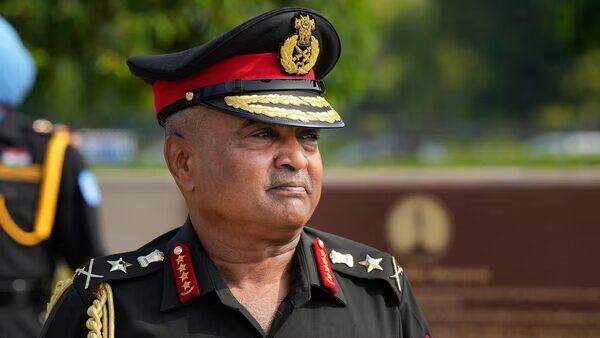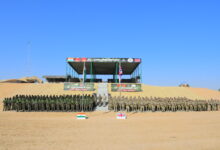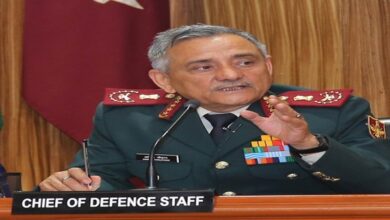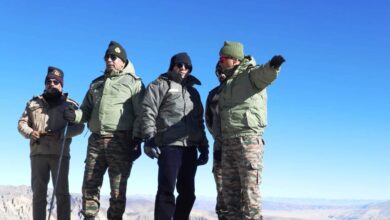Army Chief Advocates Exploring Vedas, Puranas, Mahabharata for Future Readiness

- The move also comes at a time when the military is working to make military traditions more like those in the country
- As part of these changes, the navy got a new ensign based on the seal of Maratha ruler Chhatrapati Shivaji Maharaj and got rid of the Cross of St. George.
According to army chief Manoj Pande, the Indian army has “explored epic battles of the Mahabharata” and the “strategic brilliance” of the “Mauryas, Guptas, and Marathas” that have shaped “India’s rich military heritage.” This is all part of Project Udbhav (evolution), which aims to make the force “progressive and future-ready by drawing insights from the nation’s historical military wisdom.
He was speaking at a conference called “Historical Patterns in Indian Strategic Culture,” which was put together by India’s oldest think tank, the United Service Institution (USI), which was founded in 1870. He talked about Project Udbhav, which was started by defence minister Rajnath Singh last year and aimed to use lessons from the Mahabharata, Vedas, Puranas, Upanishads, and Arthashastra in the Indian Army.
He also said that the project “has shown substantial intellectual convergences between distinguished Indian and Western scholars.”
The army and USI worked together to launch Udbhav at the Indian Military Heritage Festival in October 2023. Singh was in charge of the event.
The army leader said, “The project has gone deep into ancient texts like the Vedas, Puranas, Upanishads, and Arthashastra, which are based on right and wrong, interconnectedness, and moral values.”
He was speaking at a conference called “Historical Patterns in Indian Strategic Culture,” which was put together by India’s oldest think tank, the United Service Institution (USI), which was founded in 1870. He talked about Project Udbhav, which was started by defence minister Rajnath Singh last year and aimed to use lessons from the Mahabharata, Vedas, Puranas, Upanishads, and Arthashastra in the Indian Army.
He also said that the project “has shown substantial intellectual convergences between distinguished Indian and Western scholars.”
The army and USI worked together to launch Udbhav at the Indian Military Heritage Festival in October 2023. Singh was in charge of the event.
The army leader said, “The project has gone deep into ancient texts like the Vedas, Puranas, Upanishads, and Arthashastra, which are based on right and wrong, interconnectedness, and moral values.”
A high-level official who did not want to be named said that the Udbhav book is a collection of the discussions that have taken place so far as part of the project.
“It will be put on the USI website soon,” he said.
Air Marshal Anil Chopra (retd), an expert on strategic affairs, said that India has a long past of great warrior kings, from Maharaja Ranjit Singh to Chhatrapati Shivaji Maharaj, who were great leaders and fighters in battle.
“India has been studying Western ideas about how to fight wars for a long time, and those ideas may not work best in our region and situation.” Chopra also said, “Our rich history will help us very much as we plan for the future.”
The second-largest army in the world, the Indian Army, learns about statecraft, strategy, diplomacy, and war from old Indian texts like Kautilya’s Arthashastra, Kamandaka’s Nitisara, and Thirukkural by the Tamil poet and saint Thiruvalluvar.
“The ancient Indian wisdom comes from a civilization that dates back 5,000 years and places a huge value on knowledge.” Pande said, “This legacy is shown by a huge collection of intellectual literature, the world’s largest collection of manuscripts, and the support of many thinkers and schools in many fields.”
He also said that the project had read a lot of old works like the Vedas, Puranas, Upanishads, and Arthashastra, which are based on the ideas of interconnectedness, righteousness, and morality. It has also looked into the great fights of the Mahabharata and the strategic brilliance of the Mauryas, Guptas, and Marathas, which have shaped India’s long military history.
Ajay Bhatt, minister of state for defense, praised the army and USI for their work at the same event.
“The political situation in the world is always changing, so our military has to be able to adapt and come up with new ways to do things.” By looking into our old texts and customs, projects like Udbhav not only help us learn more about strategic culture, but they also teach us a lot about unconventional warfare strategies, diplomatic practices, and the moral issues that come up in war, Bhatt said.
The government is making a lot of efforts to “Indianize” areas like education, health care, and science, which is why this move makes sense.
In the past, the army helped fund a project that collected Indian strategies from old books. Because of this, a book with 75 aphorisms and another book called Paramparik Bhartiya Darshan— Ranniti aur Netritva ke Shashwat Niyam— or Traditional Indian Philosophy— Eternal Rules of Warfare and Leadership— were written. Everyone in the army is being told to read this book.
The move also comes at a time when the military is working to make military traditions more like those in the country, and they have already taken some steps to get rid of colonial practices.
As part of these changes, the navy got a new ensign based on the seal of Maratha ruler Chhatrapati Shivaji Maharaj and got rid of the Cross of St. George. Senior officers are no longer allowed to carry batons, and the defense ministry has started a campaign to rename British-era cantonments as military stations.







Facebook Comments